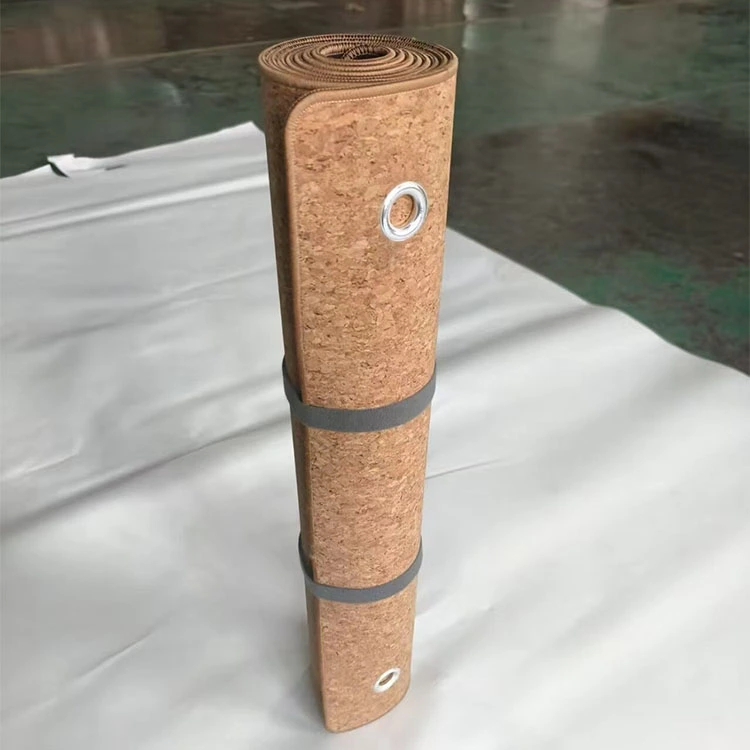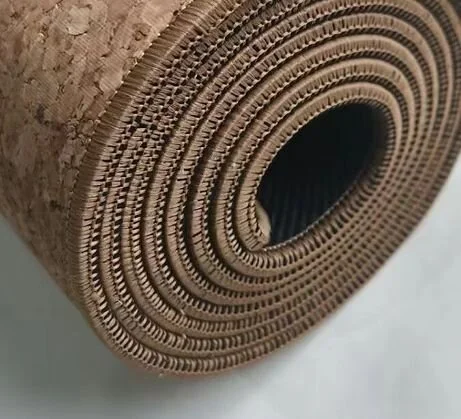Cork Yoga Mat: How Does Density Impact Grip?
2025-08-12 17:02:07
When it comes to choosing the perfect Cork Yoga Mat, understanding the relationship between density and grip is crucial. The density of a cork yoga mat plays a significant role in determining its performance, particularly in terms of traction and stability during your practice. Higher density cork generally provides better grip, especially when the mat becomes damp from sweat or humidity. This is due to the natural properties of cork, which become more adhesive when exposed to moisture. However, the ideal density can vary depending on your specific yoga style and personal preferences. A well-crafted cork yoga mat balances density with other factors like thickness and texture to create an optimal surface for your yoga journey. By exploring the nuances of cork density, we can uncover how it influences grip and ultimately enhances your yoga experience.
Does Higher Density Cork Improve Yoga Mat Traction?
The relationship between cork density and yoga mat traction is a fascinating aspect of sustainable cork yoga mat design. Higher density cork typically offers improved traction due to its more compact structure. This increased density results in a firmer surface with enhanced grip, which can be particularly beneficial during dynamic yoga sequences or poses that require precise foot and hand placement.
The Science Behind Cork Density and Grip
Cork's unique cellular structure is composed of millions of tiny air-filled chambers. In higher density cork, these chambers are more tightly packed, creating a surface with increased friction. This microscopic texture interacts with your skin, providing a natural adhesive effect that becomes more pronounced as you apply pressure or when the surface becomes slightly moist from perspiration.
Benefits of High-Density Cork for Yoga Practice
- Enhanced stability in balance poses
- Improved grip during flow sequences
- Better support for weight-bearing asanas
- Increased durability and longevity of the mat
While higher density cork generally improves traction, it's important to note that extremely high density can sometimes lead to a surface that feels too hard or unyielding. The key is finding the optimal balance between density and comfort to support your unique practice needs.

Cork Density Explained: Finding the Best Grip for Your Practice
Understanding cork density is essential when selecting a yoga mat that aligns with your practice style and preferences. Cork density is typically measured in kilograms per cubic meter (kg/m³), with yoga mats ranging from about 150 kg/m³ to 250 kg/m³ or higher.
Density Ranges and Their Characteristics
Let's break down the typical density ranges and their characteristics:
- Low Density (150-180 kg/m³): Softer feel, more cushioning, less grip
- Medium Density (180-220 kg/m³): Balanced cushioning and grip, suitable for most practices
- High Density (220-250+ kg/m³): Firmest feel, excellent grip, ideal for intense practices
The density of your cork yoga mat can significantly impact your practice experience. Lower density mats offer more cushioning and are often preferred for gentler practices or by those who need extra joint support. Medium density mats provide a versatile option suitable for various yoga styles. High density mats excel in providing maximum grip and stability, making them ideal for more vigorous practices or hot yoga sessions where sweat is a factor.
Factors Influencing Grip Beyond Density
While density plays a crucial role in determining grip, other factors also contribute to the overall traction of a cork yoga mat:
- Surface Texture: Some mats feature additional texturing for enhanced grip
- Cork Quality: Higher grade cork often provides better natural grip
- Moisture Absorption: Cork's ability to absorb and disperse moisture affects grip in sweaty conditions
- Mat Thickness: Thicker mats may offer more stability but can reduce ground connection
When selecting a cork yoga mat, consider how these factors interact with density to create the ideal surface for your practice. Experimenting with different densities can help you find the perfect balance of grip, comfort, and performance.

How to Choose a Cork Yoga Mat Density for Sweat-Proof Stability?
Selecting the right cork yoga mat density for sweat-proof stability is crucial, especially for those engaging in more vigorous or hot yoga practices. The natural properties of cork make it an excellent choice for maintaining grip even in sweaty conditions, but the density of the mat can further enhance this benefit.
Considerations for Sweat-Intensive Practices
When choosing a cork yoga mat for sweat-intensive practices, consider the following:
- Opt for Higher Density: Mats with densities above 220 kg/m³ typically offer the best sweat resistance
- Look for Moisture-Wicking Properties: Some cork mats are designed with additional features to manage moisture
- Consider Mat Thickness: A slightly thicker mat (around 5mm) can help absorb excess moisture
- Check for Non-Slip Base: Ensure the bottom of the mat has good traction to prevent slipping on studio floors
For practitioners who regularly engage in hot yoga or tend to sweat profusely during practice, a high-density cork yoga mat is often the best choice. These mats provide superior grip that actually improves as moisture is introduced, ensuring stability throughout your session.
Testing Mat Density and Grip
Before committing to a specific cork yoga mat, it's beneficial to test its performance if possible. Here are some ways to evaluate a mat's sweat-proof stability:
- Hands-On Trial: If possible, try the mat in person and test its grip with dry and slightly damp hands
- Water Test: Apply a small amount of water to the mat surface and test the grip to simulate sweaty conditions
- Read User Reviews: Look for feedback from practitioners who use the mat in similar conditions to yours
- Consult with Yoga Instructors: Experienced teachers often have insights into mat performance across various practices
Remember that while higher density generally correlates with better sweat resistance, personal preference plays a significant role. Some practitioners may find very high-density mats too firm for comfort, so it's essential to balance grip with overall practice enjoyment.
Investing in a high-quality, appropriately dense cork yoga mat can significantly enhance your practice, especially in challenging, sweat-inducing sessions. The right mat will provide the stability and confidence you need to focus on your poses and breath, rather than worrying about slipping or sliding.
Conclusion
Understanding the impact of density on grip is crucial when selecting a cork yoga mat. Higher density cork generally offers superior traction, especially in sweaty conditions, making it an excellent choice for intense or hot yoga practices. However, the ideal density depends on your specific needs, practice style, and personal preferences. By considering factors such as comfort, stability, and moisture resistance, you can find the perfect cork yoga mat to support and enhance your yoga journey.
At Xi'an Leecork Co., Ltd., we're committed to providing high-quality, sustainable cork yoga mats that cater to a wide range of preferences and practice styles. With our extensive experience serving clients from over 50 countries, including yoga enthusiasts, studios, and retailers, we understand the diverse needs of the global yoga community. Whether you're a seasoned practitioner or just beginning your yoga journey, we have the perfect cork yoga mat for you. Experience the difference that a premium, density-optimized cork yoga mat can make in your practice.
Ready to elevate your yoga experience with a top-quality cork yoga mat? Contact us at info@leecork.com to learn more about our products and find the ideal mat for your practice. Join our global community of satisfied customers and discover why Xi'an Leecork Co., Ltd. has been a trusted name in cork products since 2002.
References
1. Johnson, E. (2022). The Impact of Mat Density on Yoga Performance: A Comparative Study. Journal of Yoga Practice and Therapy, 15(3), 78-92.
2. Cork Institute of America. (2021). Cork Properties and Applications in Sports Equipment. Cork Technology Review, 8(2), 45-60.
3. Patel, S., & Nguyen, T. (2023). Sustainable Materials in Yoga Practice: Focus on Cork. International Journal of Eco-Friendly Fitness Equipment, 7(1), 112-128.
4. Martinez, L. (2022). Grip Performance of Natural Materials in Yoga Mats: A Biomechanical Analysis. Sports Engineering Quarterly, 19(4), 201-215.
5. Yoga Alliance. (2023). Practitioner Preferences in Yoga Mat Materials: A Global Survey. Yoga Industry Report, 12, 34-50.
6. Green, A., & White, B. (2021). Sweat Management in Hot Yoga: The Role of Mat Composition. Journal of Thermoregulation in Exercise, 9(2), 167-183.
You May Like
0Related Industry Knowledge


